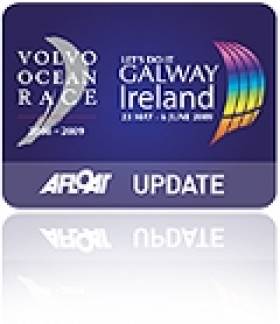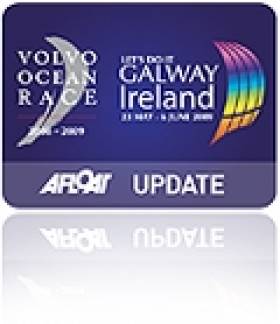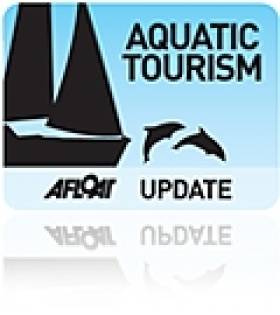Displaying items by tag: green
Green Dragon Joins the Volvo Race Legends Fleet in Spain
Ireland's Green Dragon and Telefónica Black, two Volvo Open 70s from the 2008-09 Volvo Ocean Race will join the Volvo Ocean Race Legends Regatta fleet over 1-5 November, lining up with boats that took part in the first 10 round the world races.
Ireland's Volvo 70 will race its first race in almost two years after she had finished fifth out of seven entries in the 2009 Race.
Attempts to sell it for two million euros in 2009 did not materialise. Since then, the round the world yacht has been in dry dock in Galway, rendered obsolete because her hull was heavier and keel lighter than her rivals. She recently sailed to Rotterdam to be part of an exhibition.
The two state of the art racers will showcase 38 years of development in round the world racing since the first Whitbread Round the World Race in 1973-74, when they take their place next to the Legends fleet which spans ten races.
Both boats will compete in the regatta run over two days, creating a challenge for race director Jack Lloyd and his race management team, who will be setting inshore courses that work for maxi ketches such as the race-winning Steinlager 2 and her opponent from 1989-90 Fisher & Paykel, as well as for yachts such as the Italian Tauranga which took part in 1973, and, more recently the Whitbread/Volvo Open 60 Assa Abloy/2001-02.
"The real challenge for us is to try to make all the yachts competitive with each other," Lloyd explains. "The step-up in design and technology since 1973 has been massive and we would like all the boats to be sailing together.
"We are looking at a 'pursuit ' style of racing where the boats start the race in a staggered fashion according to their size, which we feel has the best chance of creating a dramatic and competitive finish for the fleet on each of the two days of race," he adds.
Green Dragon has been entered in the Legends Regatta by Enda O'Coineen and John Killeen. O'Coineen has had a long association with the race, having been the driving force behind the NCB Ireland entry in 1989-90 and most recently Green Dragon in 2008-09, together with the very successful Galway stopover in the previous race.
The Green Dragon crew will include Killian Bushe who sailed on and built NCB Ireland and was builder of the winning entries in the last three races. The team plans to include a broad cross-section of Irish sailors who have participated in the Whitbread/Volvo Ocean Race and will also include Angela Farrell who sailed on Maiden and Deidre O'Callaghan on With Integrity during 1989-90.
Entering in the spirit of the regatta, the team will also travel with its own Irish band, the Green Dragon 'Upstarts'.
Both Green Dragon and Telefónica Black were constructed especially for the last Volvo Ocean Race. Green Dragon, from the board of Reichel Pugh, finished in fifth position, one place above the Spanish boat, from Farr Yacht Design, which was part of a two-boat campaign for Team Telefónica 2008-09. Sistership Telefónica Blue, with a new rig, a new paint job and a new name, Sanya, will race in this year's Volvo under the leadership of race-winning skipper Mike Sanderson.
Telefonica Black's best moment was when she won the final leg of the Volvo Ocean Race 2008-09 from Stockholm to St Petersburg. Her navigator, Roger Nilson, was competing in his seventh Whitbread/Volvo Ocean Race and will be reunited with the boat during the Legends regatta.
GREEN DRAGON 2008-09
Rig: sloop
Designer: Reichel Pugh
LOA 64' (19.5m)
Crew: 11
Finished: 5
Elapsed time: 135.05
Skipper: Ian Walker/GBR
TELEFONICA BLACK 2008-09
Rig: sloop
Designer: Farr Yacht Design
LOA 64' (19.5m)
Crew: 11
Finished: 6
Elapsed time: 87.1 (DNF leg 4, DNS leg 5)
Skipper: Fernando Echávarri/ESP
Entries in the Volvo Ocean Race Legends Regatta and Reunion
- Tauranga (1973-74)
- Adventure (1973-74 1977-78)
- Great Britain II (first five races)
- King's Legend (1977-78)
- Berge Viking (1981-82
- Gauloises III (1981-82)
- L'Esprit d'Equipe (1985-86)
- Rothmans (1989-90)
- Charles Jourdan (1989-90)
- Steinlager 2 (1989-90)
- Fisher & Paykel (1989-90)
- Assa Abloy (2001-02)
- Telefónica Black (2008-09)
- Green Dragon (2008-09)
Regatta Ambassadors
- Lady Pippa Blake
- Tracy Edwards MBE
- Sir Chay Blyth CBE, BEM
- Magnus Olsson
- Skip Novak
- Pierre Fehlmann
- Alain Gabbay
Green Dragon Sailing for Kinsale then Rotterdam
Galway's round the world yacht, the Volvo 70 Green Dragon, sailed from Galway Port this morning. Her first port of call is Kinsale and on Thursday she will sail for Rotterdam.
From there she will go on a low-loader for Frankfurt to become a static exhibit rather than a sailing craft. She is to appear at the world famous Frankfurt Motor Show where Galway owners say 'she will be put on display in a premier position' - fully rigged - promoting the Volvo Ocean Race 2011 - 2012 and the Race finish in Galway as part of a global village exhibtion showcasing Irish innovation, food and the marine.
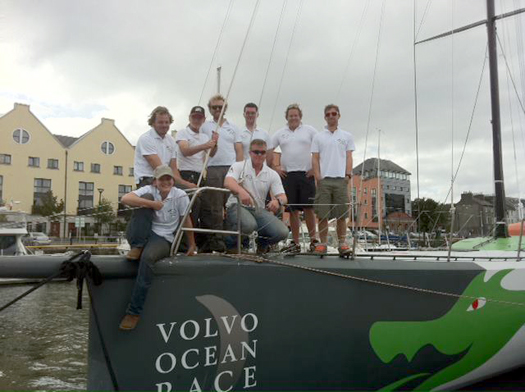
The Green Dragon crew who are enroute for Rotterdam via Kinsale
"At this major global exhibition in Germany this will be a fantastic opportunity to showcase Irish Sailing and our plans for 2012 - and also to show our support for Team Sanya our Chinese Irish Volvo Ocean Race Team. A formal send off is planned from Dublin for Team Sanya on Monday 5th Sept", says Enda O'Coineen of Let's Do It Global, who is sailing on the first leg of the voyage to Frankfurt.
With only four months to the start of the race, China revealed its first sole entry into the Volvo Ocean Race this morning and also announced an Irish sponsor as part of its first challenge for world sailing honours. Discover Ireland, promoting Irish tourism, is backing the boat as a secondary sponsor. Mike Sanderson, one of the world's leading sailors and past winner of the race, will lead Team Sanya.

Irish crew will also be on the boat for this episode of the race but those details are under wraps until an Irish launch of the project on July 1, it is understood.
The Chinese entry is the seventh entry in to the race.
The race finishes in Galway in June 2012.
Despite its huge technical and financial resources, the most populous nation on the planet has never won a round-the-globe sailing competition but intends to make the breakthrough, with the recruitment of New Zealander Mike Sanderson as skipper.
Sanderson, 40, is a two-time winner of the Volvo Ocean Race and will chase a hat trick of triumphs with a crew that mixes experienced sailors with relatively raw Chinese members.
Team Sanya is the seventh world-class contender to join this year's race, with Sanderson going head-to-head with some of the sailing's biggest names.
"This is a fantastic opportunity to race under the flag of such a great country and culture," said Sanderson today at the Team Sanya launch in central Beijing.
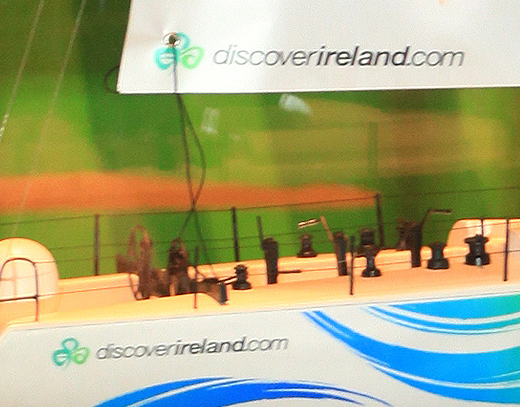
"We are building up a strong team and are ready to take on this exciting challenge. Our approach will be one of compelling intent, working fast and smart, representing this great country and team with ambition, dynamism and colourful energy."
China, as is the case in many sports, has incredible potential within sailing and a win in the Volvo Ocean Race would be a huge boost to its ambitions.
Li Quanhai, Vice Chairman of the China Yacht Association said: "China is a sports power and has abundant marine resources. Our involvement in top sailing events, such as the Olympic Regatta and the Volvo Ocean Race, greatly improves the development of China's water sports.
Knut Frostad, CEO of Volvo Ocean Race said: "We are very excited about the news of Team Sanya and the return of Mike Sanderson, a veteran and true ambassador of the Volvo Ocean Race.
"This will be the seventh entry for the next edition and will not only bring a competitive yacht to our first class field but also will allow China to build on its already large sailing following.
"Team Sanya will allow the Chinese sailing fans to connect with the Volvo Ocean Race again and will be an amazing platform to engage with new audiences and attract potential tourists to Sanya and China itself."
For the Deputy Mayor of Sanya, Wu Yanjun, the city known as the "Hawaii of the Orient" would directly benefit from this opportunity. "Hosting world class events like the Volvo Ocean Race will directly improve our sailing and yachting related facilities."
The stopover will be in Luhuitou Bay, Sanya, where construction is expected to finish in August 2011. When completed, the facility will be a world-class marina.
China was previously represented in the 2008-2009 edition by Green Dragon, a jointly backed venture with Ireland and there will again be an Irish flavour to the Team Sanya challenger with Discover Ireland, promoting Irish tourism, renewing its commitment as a secondary sponsor.
Helly Hansen will be the Official Clothing Partner to the team and the Sanya-based Blue Ocean Protection Association will conduct onboard environmental-protection initiatives while spreading the philosophy of protecting the oceans everywhere throughout the race.

Mr. Jiang Sixian, Vice-governor of Hainan Province and Party Secretary of Sanya City, Mike Sanderson, Skipper of Team Sanya, George Blake, General Manager, Global Promotion for Team Sanya. China launched its first ever sole entry in the Volvo Ocean Race today and announced that one of the world's leading sailors, twice Volvo Ocean Race winner Mike Sanderson from New Zealand, would helm its Team Sanya for the gruelling nine-month, 39,270 mile challenge beginning in October. The Announcement took place at the Park Hyatt, Beijing, China Friday June. 17, 2011.
Seaweed Experience in West Cork
Seaweed picking is just one example of many 'green' tourism breaks now available in Ireland, according to The Irish Times.
Inchydoney Island Lodge and Spa in West Cork offers a two-night 'seaweed experience' for those looking for a more responsible, activity-based weekend away.
Aside from the typical spa treatments such as seaweed baths, local experts will take visitors seaweed foraging by kayak, while also educating about the area's natural beauty and abundant marine life.
Seaweed was once a staple of the Irish diet, and this break aims at a revival of the versatile superfood by showing how it can be used in a variety of dishes.
The Irish Times has more on the story HERE.


























